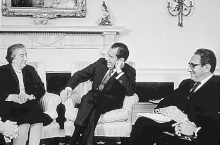
The Yom Kippur War, also known as the Ramadan War, the October War, the 1973 Arab–Israeli War, or the Fourth Arab–Israeli War, was an armed conflict fought from 6 to 25 October 1973, between Israel and a coalition of Arab states led by Egypt and Syria. The majority of combat between the two sides took place in the Sinai Peninsula and the Golan Heights—both of which had been occupied by Israel in 1967—with some fighting in African Egypt and northern Israel. Egypt's initial objective in the war was to seize a foothold on the eastern bank of the Suez Canal and subsequently leverage these gains to negotiate the return of the rest of the Israeli-occupied Sinai Peninsula.

United Nations Security Council Resolution 242 (S/RES/242) was adopted unanimously by the UN Security Council on November 22, 1967, in the aftermath of the Six-Day War. It was adopted under Chapter VI of the UN Charter. The resolution was sponsored by British ambassador Lord Caradon and was one of five drafts under consideration.

Muhammad Anwar es-Sadat was an Egyptian politician and military officer who served as the third president of Egypt, from 15 October 1970 until his assassination by fundamentalist army officers on 6 October 1981. Sadat was a senior member of the Free Officers who overthrew King Farouk in the Egyptian Revolution of 1952, and a close confidant of President Gamal Abdel Nasser, under whom he served as Vice President twice and whom he succeeded as president in 1970. In 1978, Sadat and Menachem Begin, Prime Minister of Israel, signed a peace treaty in cooperation with United States President Jimmy Carter, for which they were recognized with the Nobel Peace Prize.

Golda Meir was an Israeli politician who served as the fourth prime minister of Israel from 1969 to 1974. She was Israel's first and only female head of government and the first in the Middle East.

The War of Attrition involved fighting between Israel and Egypt, Jordan, the Palestine Liberation Organisation (PLO) and their allies from 1967 to 1970.

The Camp David Accords were a pair of political agreements signed by Egyptian President Anwar Sadat and Israeli Prime Minister Menachem Begin on 17 September 1978, following twelve days of secret negotiations at Camp David, the country retreat of the President of the United States in Maryland. The two framework agreements were signed at the White House and were witnessed by President Jimmy Carter. The second of these frameworks led directly to the 1979 Egypt–Israel peace treaty. Due to the agreement, Sadat and Begin received the shared 1978 Nobel Peace Prize. The first framework, which dealt with the Palestinian territories, was written without participation of the Palestinians and was condemned by the United Nations.
The Khartoum Resolution of 1 September 1967 was issued at the conclusion of the 1967 Arab League summit, which was convened in Khartoum, the capital of Sudan, in the wake of the Six-Day War. The resolution is famous for containing what became known as the "Three Noes" or "The Three Noes of Khartoum".

Intermittent discussions are held by various parties and proposals put forward in an attempt to resolve the ongoing Israeli–Palestinian conflict through a peace process. Since the 1970s, there has been a parallel effort made to find terms upon which peace can be agreed to in both the Arab–Israeli conflict and in the Palestinian–Israeli conflict. Notably the Camp David Accords between Egypt and Israel, which included discussions on plans for "Palestinian autonomy", but did not include any Palestinian representatives. The autonomy plan would not be implemented, but its stipulations would to a large extent be represented in the Oslo Accords.
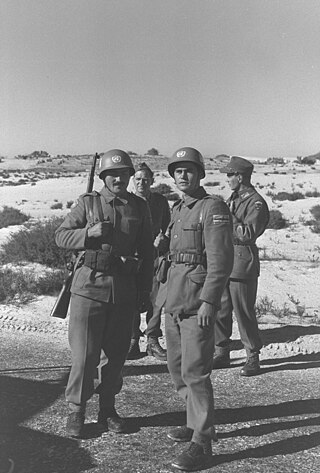
The United Nations Emergency Force (UNEF) was a military and peacekeeping operation established by the United Nations General Assembly to secure an end to the Suez Crisis of 1956 through the establishment of international peacekeepers on the border between Egypt and Israel. Approved by resolution 1001 (ES-I) of 7 November 1956, UNEF was developed in large measure as a result of efforts by UN Secretary-General Dag Hammarskjöld and a proposal from Canadian Minister of External Affairs Lester B. Pearson, who would later win the Nobel Peace Prize for it. The General Assembly had approved a plan submitted by the Secretary-General which envisaged the deployment of UNEF on both sides of the armistice line; Egypt accepted receiving the UN forces, but Israel refused it. In May 1967, Egypt asked that UNEF leave Egypt; as the troops started to evacuate over the next days, Israel invaded Egypt on 6 June 1967, initiating the Six-Day War and causing the death of one Brazilian Sergeant and 14 Indian peacekeepers – 17 other members of UNEF were also injured. The last member of UNEF left Egypt on 17 June.
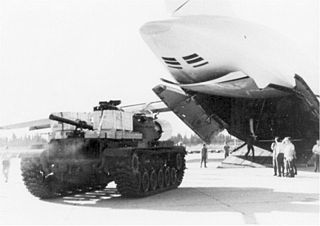
Operation Nickel Grass was the codename for a strategic airlift conducted by the United States to deliver weapons and supplies to Israel during the 1973 Arab–Israeli War. Between 14 October and 14 November of that year, the Military Airlift Command of the United States Air Force shipped approximately 22,325 tons of supplies, including tanks, artillery, and ammunition, in multiple flights of C-141 Starlifters and C-5 Galaxys. This initiative was undertaken to help improve the position of the Israeli military in the face of a large-scale joint offensive by Egypt and Syria, both of which had been receiving extensive support from the Soviet Union.
The Rogers Plan was a framework proposed by United States Secretary of State William P. Rogers to achieve an end to belligerence in the Arab–Israeli conflict following the Six-Day War and the continuing War of Attrition.
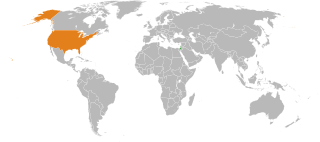
Since the 1960s, the United States has been a strong supporter of Israel. It has played a key role in the promotion of good relations between Israel and its neighbouring Arab states—notably Jordan, Lebanon, Egypt—while holding off hostility from countries such as Syria and Iran. Relations with Israel are an important factor in the U.S. government's overall foreign policy in the Middle East, and the U.S. Congress has placed considerable importance on the maintenance of a supportive relationship.
The Geneva Conference of 1973 was an attempt to negotiate a solution to the Arab–Israeli conflict as envisioned in United Nations Security Council Resolution 338 following the called-for cease-fire to end the Yom Kippur War. After considerable "shuttle diplomacy" negotiations by Henry Kissinger, the conference opened on 21 December 1973 under the auspices of the United Nations Secretary General, with the United States and the USSR as co-chairmen. The foreign ministers of Egypt, Jordan and Israel were in attendance. The table with Syria's nameplate remained unoccupied, although Syria had indicated possible future participation. Each foreign minister spoke, mainly directed to their domestic audiences rather than to each other. Kissinger articulated his step-by-step strategy and stated that the goal of the conference was peace; the immediate need was to strengthen the cease-fire by accomplishing a disengagement of forces as the "essential first step" toward implementation of UN 242. The meeting was then adjourned.

The Allon Plan was a political proposition that outlined potential next steps for Israel after the 1967 Arab–Israeli War. It was drafted by Israeli politician Yigal Allon following Israel's seizure of territory from Syria, Jordan, and Egypt; the Israeli military had come to occupy Syria's Golan Heights, the Jordanian-annexed West Bank and the Egyptian-occupied Gaza Strip, and Egypt's Sinai Peninsula. Allon advocated a partitioning of the West Bank between Israel and Jordan, the creation of a sovereign state for Druze in the Golan Heights, and the return of most of the Sinai Peninsula to Egypt.
The Arab–Israeli conflict began in the 20th century, evolving from earlier Intercommunal violence in Mandatory Palestine. The conflict became a major international issue with the birth of Israel in 1948. The Arab–Israeli conflict has resulted in at least five major wars and a number of minor conflicts. It has also been the source of two major Palestinian uprisings (intifadas).
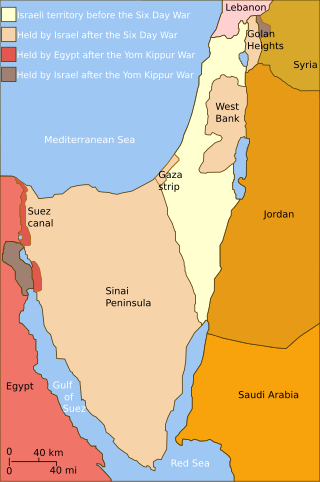
United Nations Security Council Resolution 338 was a three-line resolution adopted by the UN Security Council on 22 October 1973, which called for a ceasefire in the Yom Kippur War in accordance with a joint proposal by the United States and the Soviet Union. It was passed at the 1747th Security Council meeting by 14 votes to none, with China abstaining.
The Six-Day War was fought between June 5 and June 10, 1967, by Israel and the neighboring states of Egypt, Jordan, and Syria. The origins of the war include both longstanding and immediate issues. At the time of the war, the earlier foundation of Israel, the resulting Palestinian refugee issue, and Israel's participation in the invasion of Egypt during the Suez crisis of 1956 continued to be significant grievances for the Arab world. Arab nationalists, led by Egyptian President Gamal Abdel Nasser, continued to be hostile to Israel's existence and made grave threats against its Jewish population. By the mid-1960s, relations between Israel and its Arab neighbors had deteriorated to the extent that a number of border clashes had taken place.
The Soviet Basic Thesis on the Middle East Conflict is a document issued by the Soviets on June 17, 1969, in response to the April American State Department peace proposal. The plan was part of the Two Power Talks held between the United States and the Soviet Union in 1969 and it basically reiterates the proposals made by the Soviets in December, 1968, which were approved by Gamal Abdel Nasser. In brief, the Soviet thesis did not agree to direct negotiations between the parties and reaffirmed that Israel should withdraw to the pre-June 5, 1967, lines.

Golda is a 2023 biographical drama film directed by Guy Nattiv and written by Nicholas Martin. The film depicts actions of Golda Meir, the 4th Prime Minister of Israel, during the Yom Kippur War. It stars Helen Mirren, Camille Cottin and Liev Schreiber.

Israeli passage through the Suez Canal and Straits of Tiran was restricted by Egypt, in cooperation with Saudi Arabia, for much of the time between the 1948 Arab-Israeli War and the 1967 Six-Day War. Since the Egypt–Israel peace treaty of 1979, Israel has enjoyed freedom of navigation through the Suez Canal and the Straits of Tiran.
